In this series, we look at different aspects of Christmas and relate them to the departments in the College of Liberal Arts. Follow this page for updates through December 25!
Beginning somewhere between the years 270-343, the idea of Saint Nicholas was created. Saint Nicholas was regarded as a protector and provider for the poor and children. The notion of gift giving began as early as the 12th century in European when Saint Nicholas was thought to give gifts on December 6. This eventually transitioned into what we now celebrate as Christmas Day, or December 25.
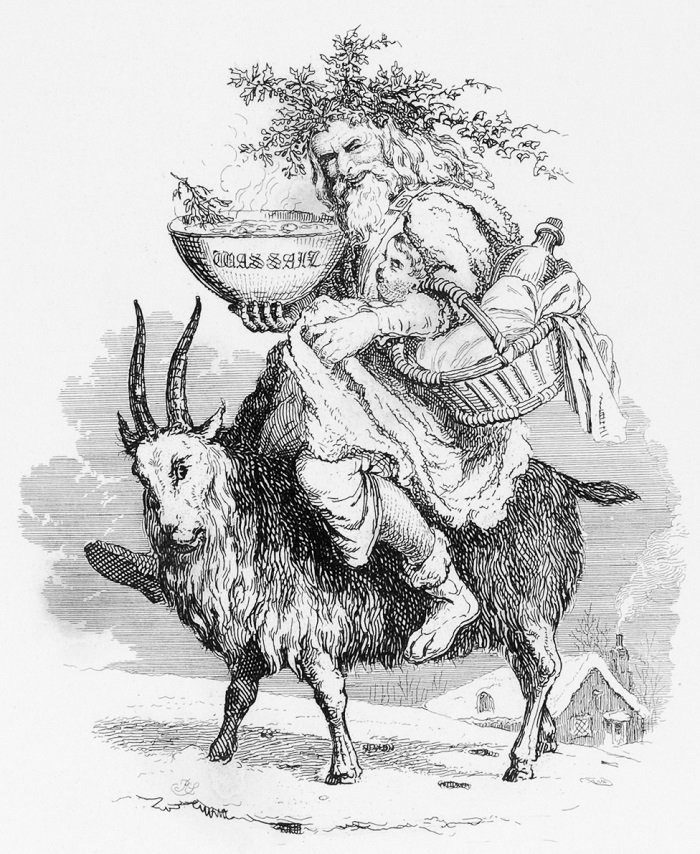 Father Christmas | Robert Seymour
Father Christmas | Robert Seymour
Starting in the 15th century, Father Christmas became the embodiment of Christmas cheer. Father Christmas, an elfish figure with a mischievous grin who is adorned with holly and long robes, appeared in holiday-themed celebrations and literature for the next several centuries.
The illustrator, Thomas Nast, (known also for his depiction of Uncle Sam) was the first to greatly contribute to the personification of Santa Claus. His most famous Santa, for Harper’s Weekly in 1881, shows the profile of a portly fellow with a short beard, long-stemmed pipe, and armful of toys.
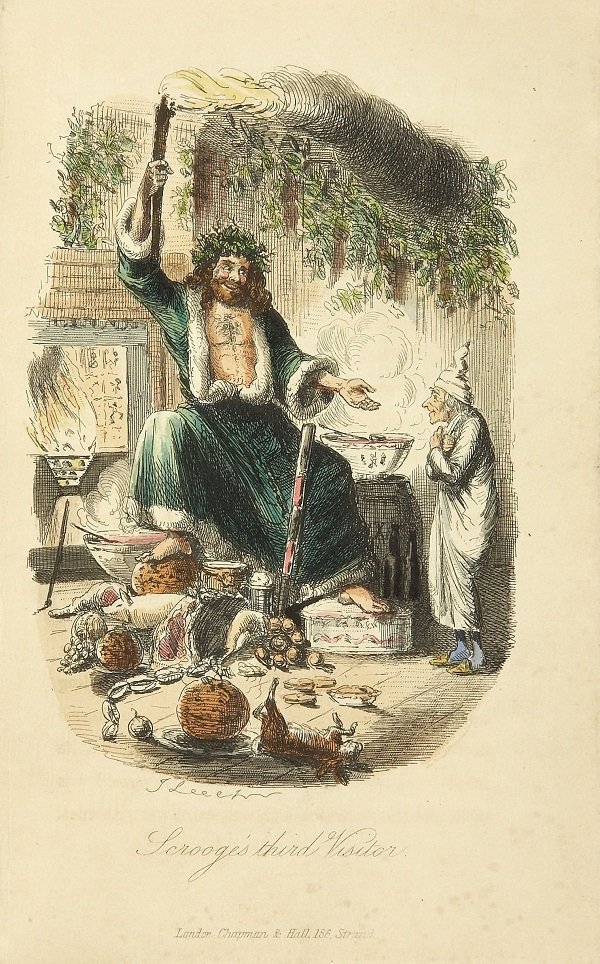 A Christmas Carol | John Leech
A Christmas Carol | John Leech
Finally, the Santa Claus we all know and love today came to popularity in the 1930s when Coca Cola commissioned Haddon Sundblom to create a Christmas-time mascot for their holiday campaigns. This is where the imagery of a fur-trimmed red suit, glasses, rosy cheeks, and full white beard was born. Read more about this iconic character.

Santa Claus | Haddon Sundblom
On the second day of LA, your favorite College brought to you: perfect performances from Performing Arts!
 10 more days 'til Christmas! On this "Day of LA," we're covering writing as homage to our English department.
10 more days 'til Christmas! On this "Day of LA," we're covering writing as homage to our English department.
When you're writing in your holiday card, is the simple “Merry Christmas/Happy Holidays” getting boring? Here are some fun phrases you can use to spice it up!
“This holiday season, let’s make it a point to cherish what’s truly important in our lives: cookies.”
“This Christmas, may your family be functional and all your batteries be included.”
“I hope the magic of Christmas fills every corner of your heart and home with joy — now and always.”
“I'll miss celebrating with you this Christmas. Eat a few extra cookies for me.”
Find more on Goodhousekeeping's site.
Does the sight of a Christmas tree fill you up with glee? If so, this sensation could be a reaction from your sensory motor cortex, the premotor and primary motor cortex, and the parietal lobule in your brain! This phenomenon is known as the "Christmas spirit network." Here are some more interesting facts about psychology and Christmas from Psychology Today:
So, you or someone you know just sent a letter to Santa Claus in the North Pole... what happens to it now? Well, according to the U.S. Postal Service, you might get a response back!
Called "Operation Santa," this program allows the public to browse through the posted letters to Santa Claus online and write back to the children or even send a present.
USPS Operation Santa FAQ What is the origin of Operation Santa?
The Postal Service — then the Post Office Department — began receiving letters to Santa Claus more than 100 years ago. In 1912 Postmaster General Frank Hitchcock authorized local Postmasters to allow postal employees and citizens to respond to the letters — a program that eventually became known as Operation Santa.
In the 1940s, mail volume for Santa increased so much that the Postal Service invited charitable organizations and corporations to participate by providing written responses and small gifts.
Through the years, the program grew and took on a life of its own. Today, customers can go online to browse through the letters and if one touches them, they can adopt it and help the child have a magical holiday.
What is the program’s mission?
The mission of USPS Operation Santa is to provide a channel where people can give back and help children and families — enabling them to have a magical holiday when they otherwise might not — one letter to Santa at a time.
Read more about this great program and get those letters to Santa in the mail!
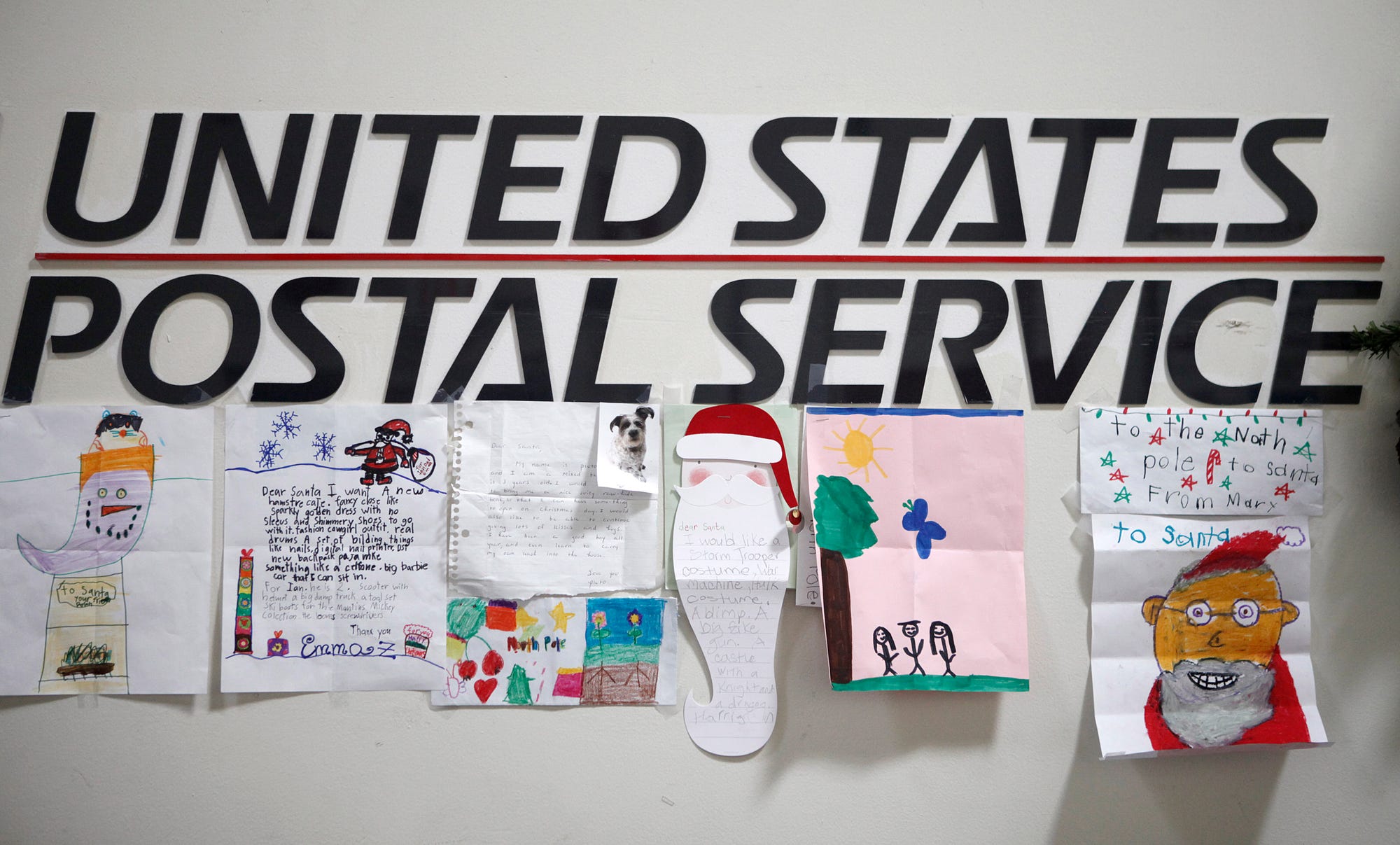
Today we'll explore Christmas traditions in different countries in recognition of our Global Studies department.
From an American point of view, when we talk of Christmas we often think of sitting by the fireplace on Christmas morning, opening presents with our family, and having Christmas lunch that includes a turkey or ham, mashed potatoes, and cranberry sauce.
Some might be surprised to learn this is not a universal experience! For example, in Japan, emphasis is placed on Christmas Eve when couples go out for a night on the town to celebrate their love and give each other gifts. It's less common to give gifts to family members.

In Italy, children receive gifts on both December 24th and January 6th, how lucky! On the 6th, a witch by the name "La Befana" fills the stockings of children with sweets or coal depending on how good they have been that year.
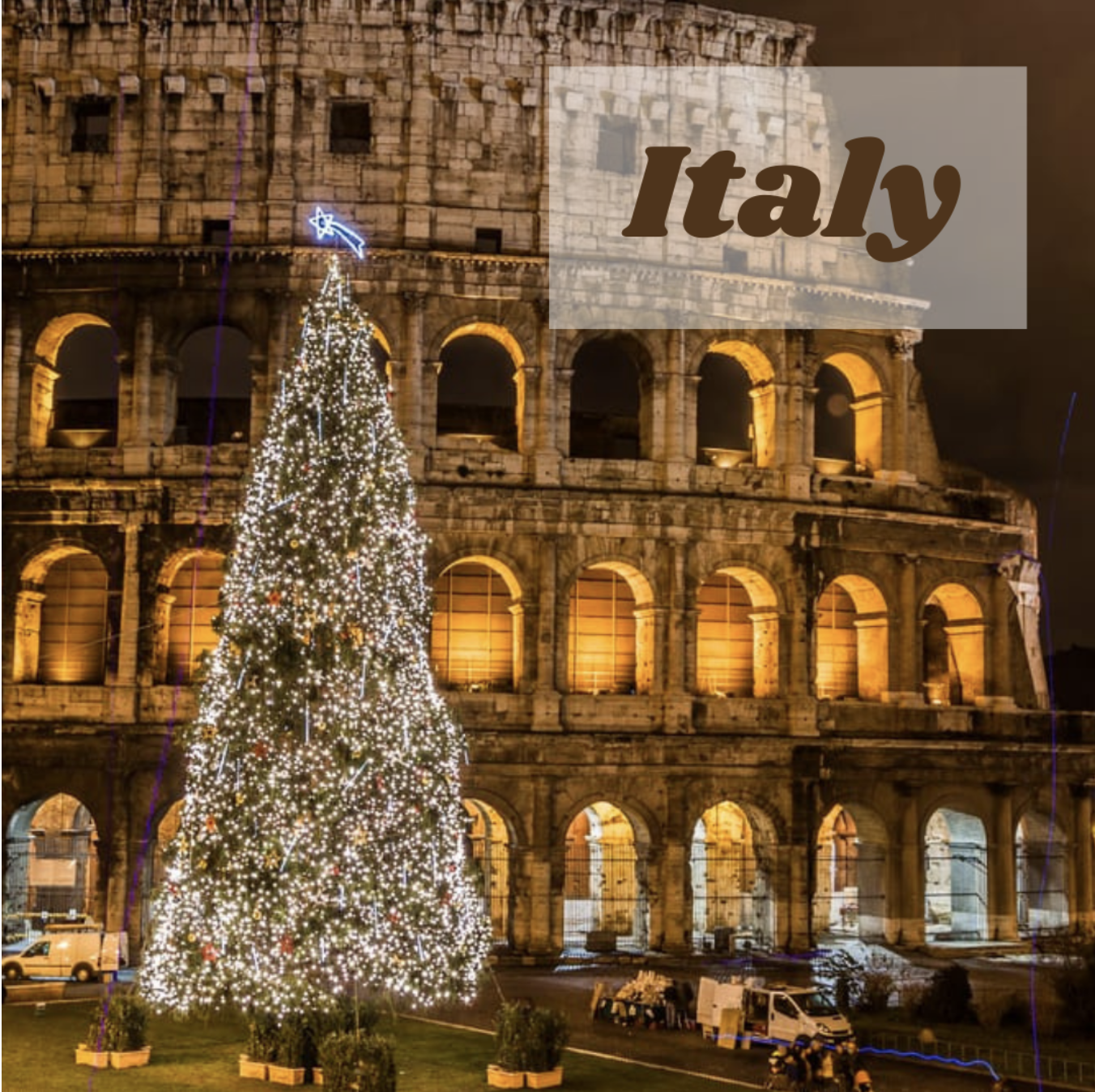
Curious about other international Christmas traditions? Find out how other countries celebrate at Why Christmas?.
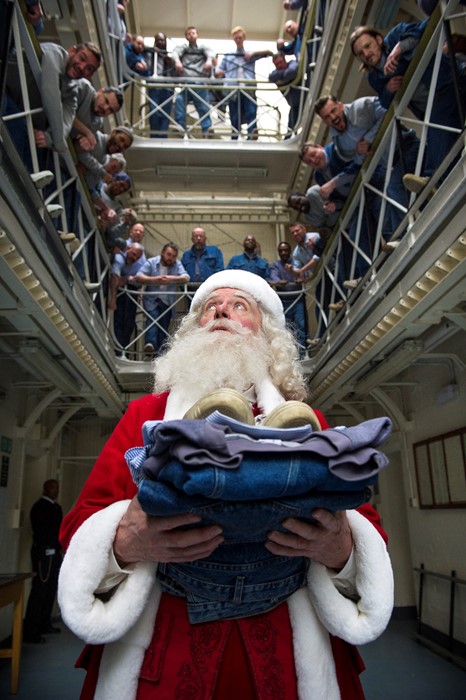 On this Day in the LA we cover Criminal Justice by looking at what it’s like to spend Christmas in prison. Below are excerpts from a testimonial from a former inmate as published on Dazed Digital:
On this Day in the LA we cover Criminal Justice by looking at what it’s like to spend Christmas in prison. Below are excerpts from a testimonial from a former inmate as published on Dazed Digital:
Christmas in prison isn’t like Christmas out there in the real world, but at the end of the day it’s still Christmas and there is an effort made at some institutions to make inmates feel the holiday cheer. During my 21 years of incarceration at seven different federal facilities, I witnessed the whole spectrum in regards to what inmates and staff do during the holiday seasons.
Presents
The staff does give out Christmas bags every year and that is a big event. It’s a big bag of candy with Reese’s Peanut Butter Cups, Hershey’s chocolate bars, Honey Buns, Grandma’s cookies, and much more. A nice bag of exclusive items that you don’t normally get. As soon as the staff gives out the bags and then unlock the doors it is pandemonium on the tiers as the block turns into the New York Stock Exchange and everyone is bartering their items, trading them off and selling their bags. Everything becomes a currency.
Relatives
The only time you see your relatives in prison is out on what prisoners call "the dance floor", i.e. the Visiting Room. All Bureau of Prison’s facilities have visits on Christmas and all the other holidays. But the visiting rooms have limited space and it’s not like everyone’s relatives are coming to see them. Only the lucky few get visits on Christmas. For most inmates, the only times they see their relatives at Christmas is when their family members are locked up with them.
Games
In the TV rooms the prisoners go hard on sports. The NBA games dominate the television at Christmas. Prisoners watch games all day, shuffling off to the phones during commercials to call their loved ones and feel some holiday love. Guys will be betting, drinking, eating, and dreaming of the New Year and a time when they will get out to enjoy a Christmas in the real world. The recreation department also hosts events like bingo, card, pool, chess tournaments and craft activities. They attempt to go the extra mile for the holiday activities and provide a diversion for inmates missing their family and loved ones during Christmas.
 5 days away from Christmas! So let's explore the history of the Christmas tree. Did you know that the utilization of decorated trees dates back as far as ancient Egyptian civilizations? Every solstice in Ancient Egypt, the Egyptian god Ra would recover from an illness. The Egyptians would fill their homes with green palm rushes to celebrate.
5 days away from Christmas! So let's explore the history of the Christmas tree. Did you know that the utilization of decorated trees dates back as far as ancient Egyptian civilizations? Every solstice in Ancient Egypt, the Egyptian god Ra would recover from an illness. The Egyptians would fill their homes with green palm rushes to celebrate.
Early Romans celebrated "Saturnalia" around the solstice to honor the god Saturn who would bless them with plentiful orchards and farms shortly after the solstice. They would celebrate by decorating their homes and temples with evergreen boughs. Even the Scandanavian Vikings regarded evergreens as a sacred plant to their sun god, Balder. The Christmas tree we all know and love today was introduced to America by a German settler in Pennsylvania in the 19th century. At first, many Americans found the tree to be an offensive pagan mockery of Christmas but as they grew more accustomed to its presence by Irish and German settlers, it became a welcome symbol of Christmas.
Read more about this interesting history on the History Channel website.
Today marks just 4 DAYS before Christmas. It's so close! And nothing says “Merry Christmas and Happy Holidays” like a good ol’ lawsuit! Here are a couple Christmas-themed lawsuits reported by The Reeves Law Group:
“City Tries to Force Family to Scale Back Christmas Decorations”
You can’t get much grinchier than the city of Plantation, FL, and its decision to go after a beloved, long-running Christmas display. Mark and Kathy Hyatt are known for their lavish holiday lawn spectacles each December in South Florida. The Sun-Sentinel reported that the Hyatts use more than 200,000 lights, snow, a three-story Christmas tree, and a variety of other decorations to spread holiday cheer.
Starbucks “War” on Christmas
This one isn’t really a lawsuit but it certainly possesses the type of faux outrage that could lead to one. The Starbucks holiday cups first stirred controversy in 2015 when the coffee and flavored beverage establishment removed all holiday iconography and opted for just the plain red cup. Everyone on social media had an opinion ranging from boycotts to “who cares.” Even the 45th President-Elect of the U.S. Donald Trump — then campaigning — mentioned it as part of the “war on Christmas” in November 2015.
Read more of these sad-but-true cases on The Reeves Law Group blog.
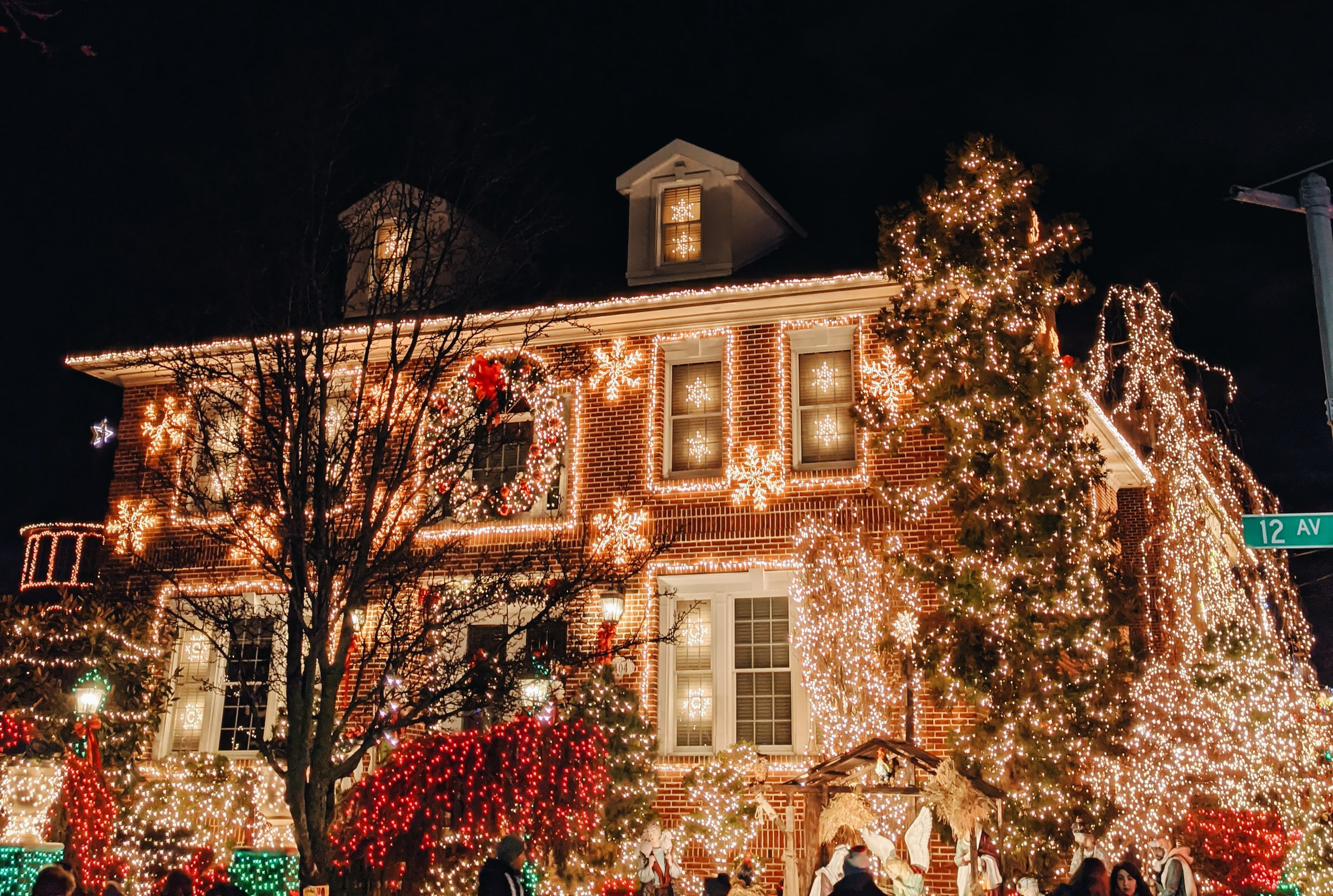
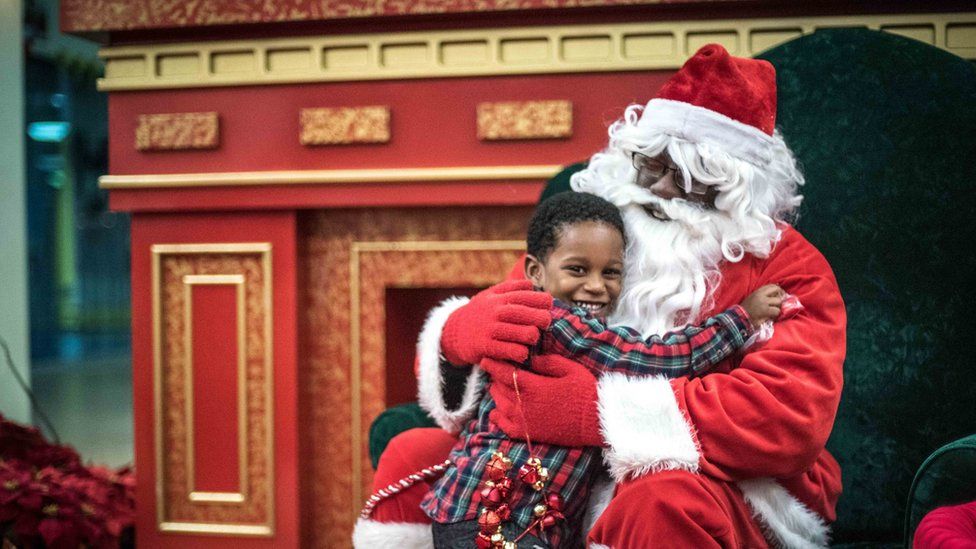 Only 3 more days ‘til Christmas! In recognition of Africana Studies, we are looking at a bit of history behind Black Santa Claus.
Only 3 more days ‘til Christmas! In recognition of Africana Studies, we are looking at a bit of history behind Black Santa Claus.
Though the origin of Santa Claus can be traced back to 4th century monk Saint Nicholas who lived in what is now Turkey, it is important that Santa Claus be an inclusive character for children of all ethnic and racial backgrounds to look up to. The first politically appropriate appearance of Black Santa Claus was in 1936 in Harlem by a man named Bill “Bojangles” Robinson at a Christmas Eve party for underprivileged children. In 1943, Harlem hired their first Black department store Santa Claus and so did Chicago in 1946.
In 1969, a department store in Cincinnati refused to hire a Black Santa Claus because, "[Black Santa Claus] has nothing to do with equality of employment. It just doesn't fit the symbol as kids have known it”. In response to the store-owners comment, Reverend Otis Moss Jr. refuted that "If a department store cannot conceive of a black man as Santa Claus for 30 days, it most assuredly cannot conceive of his being president or vice president for 365 days”. The department store gave in the following year and hired a Black Santa Claus which marked the beginning of many other stores following in their footsteps. (Source: "The secret history of black Santas" by Brian Wheeler, BBC News)
Now, Black Santa Claus is represented more in department stores and media but if you want to show some extra support for Black Santa Claus here are some helpful sites:
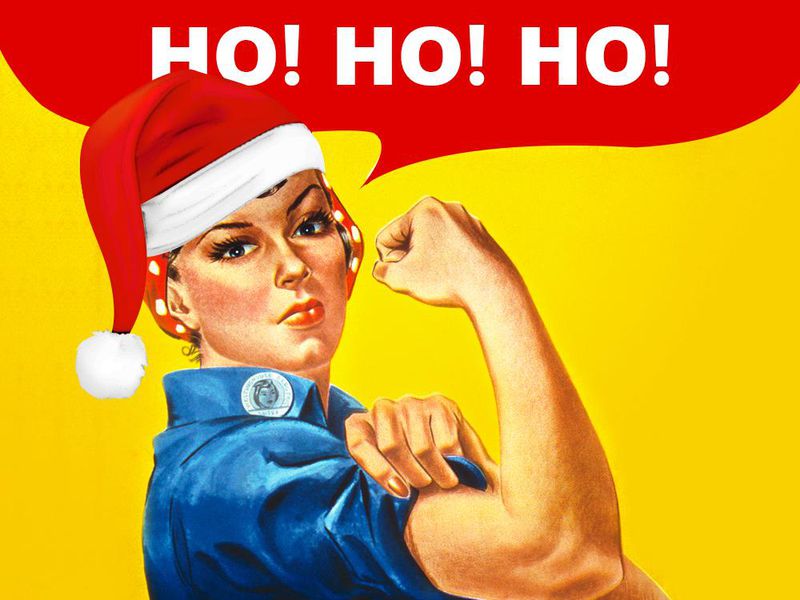 2 days away from Christmas! On this day in the LA, we celebrate Gender Studies.
2 days away from Christmas! On this day in the LA, we celebrate Gender Studies.
During World War II in the USA, women took on roles often occupied by men such as crane operators, baseball players, cab drivers, etc. 80 years ago, malls and department stores would even hire women to dress up as Santa Claus! Back then, this notion was highly criticized and to some surprise, still is today.
Read more about this and the role of Mrs. Santa Claus in the Smithsonian Magazine.
Photo source: Illustration by Shaylyn Esposito [Santa hat via iStock]
Today we're exploring an idea from a social worker about Christmas.
Kids love the idea of Santa and the magic that surrounds him but should we tell them that all the presents under the tree are from Santa? Maybe not, says social worker Megan Dunn from Owensboro, Kentucky. That is, at least in the case of the expensive presents. In her Facebook post she urges parents to stop telling their kids Santa got them that new iPad or Xbox. When other kids who got less expensive gifts from Santa compare themselves to those who got the pricey ones, it won’t just make them feel jealous, it will make them feel like they did something wrong in the eyes of Santa. This could have a very big impact on a child’s self-esteem and behavior.
Read more about how you can make Christmas more equitable on Upworthy.
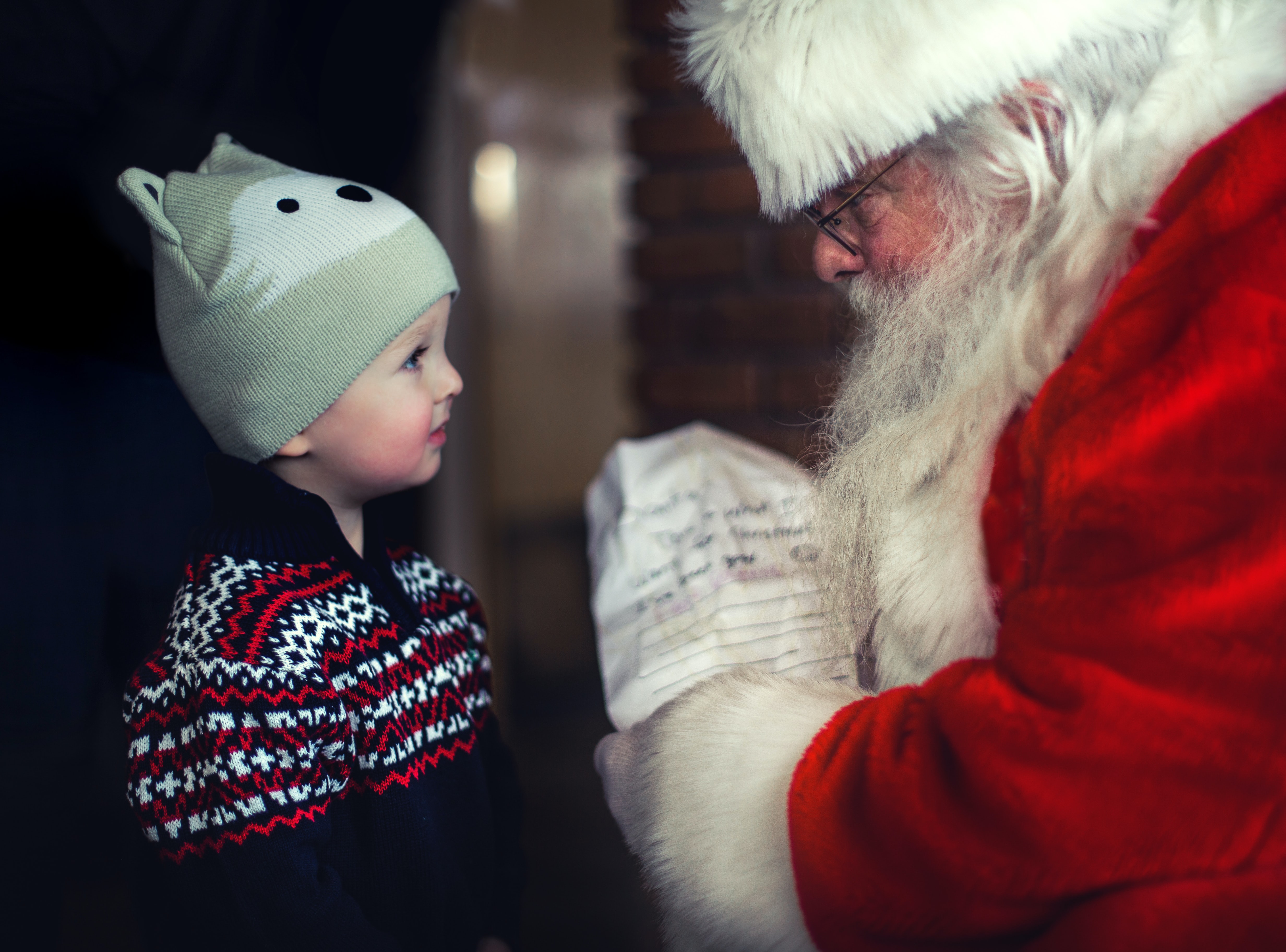
In the US we often think of Christmas whenever we approach this time of the year but many cultures celebrate different holidays this season.
Judaism is a religion practiced mainly in North America, France, Great Britain, and Israel. People of the Jewish faith celebrate the festival Hanukkah during December. Hanukkah lasts for 8 days and commemorates the Maccabean Revolt against the Greek-Syrian oppressors. It is also known as the "Festival of Lights."
Kwanzaa is a holiday intended to connect Africans displaced outside of the continent of Africa with their cultural roots. This holiday was created by Dr. Maulana Karenga in 1966. The word Kwanzaa translates to “first fruits” and is meant to celebrate the first harvest and also life itself. It is celebrated beginning December 26th to January 1st.
On December 12th, many Catholic Mexicans, Catholic Mexican-Americans, and Catholic Hispanic-Americans celebrate the Feast of Our Lady Guadalupe in honor of the “Virgin of Guadalupe” - the Patron Saint of Mexico. This celebration commemorates the first appearance of Mary, the Mother of the True God, to Juan Diego, a poor laborer.
In recognition of the Sociology department at the USI College of Liberal Arts we will be exploring the meaning of Christmas under the lens of Marxism.

This article by Fightback posits that, under a capitalist governance, “the true meaning of Christmas” has been lost in displays of wealth. These displays of wealth for some are in stark contrast to the thousands of unhoused people in the streets struggling to get by this time of year.
In the beginning, Christmas was a time for good Christians to lend a hand to those in need but, under a capitalist reign, that sense of giving to the less fortunate has become more about "shameless commercialism and rampant consumer spending, justified by appeals to higher values."
The article goes on to say, "...it is socialism, a system based on human need, that more properly embodies the 'true meaning of Christmas': concern for our fellow human beings, helping the poor and sick, peace and international solidarity. By taking the means of production out of the hands of the capitalist class and putting them into common ownership under democratic workers’ control, we can put society’s resources where they are most needed and build a future where the seasonal aspirations of the holiday can become a permanent reality.”